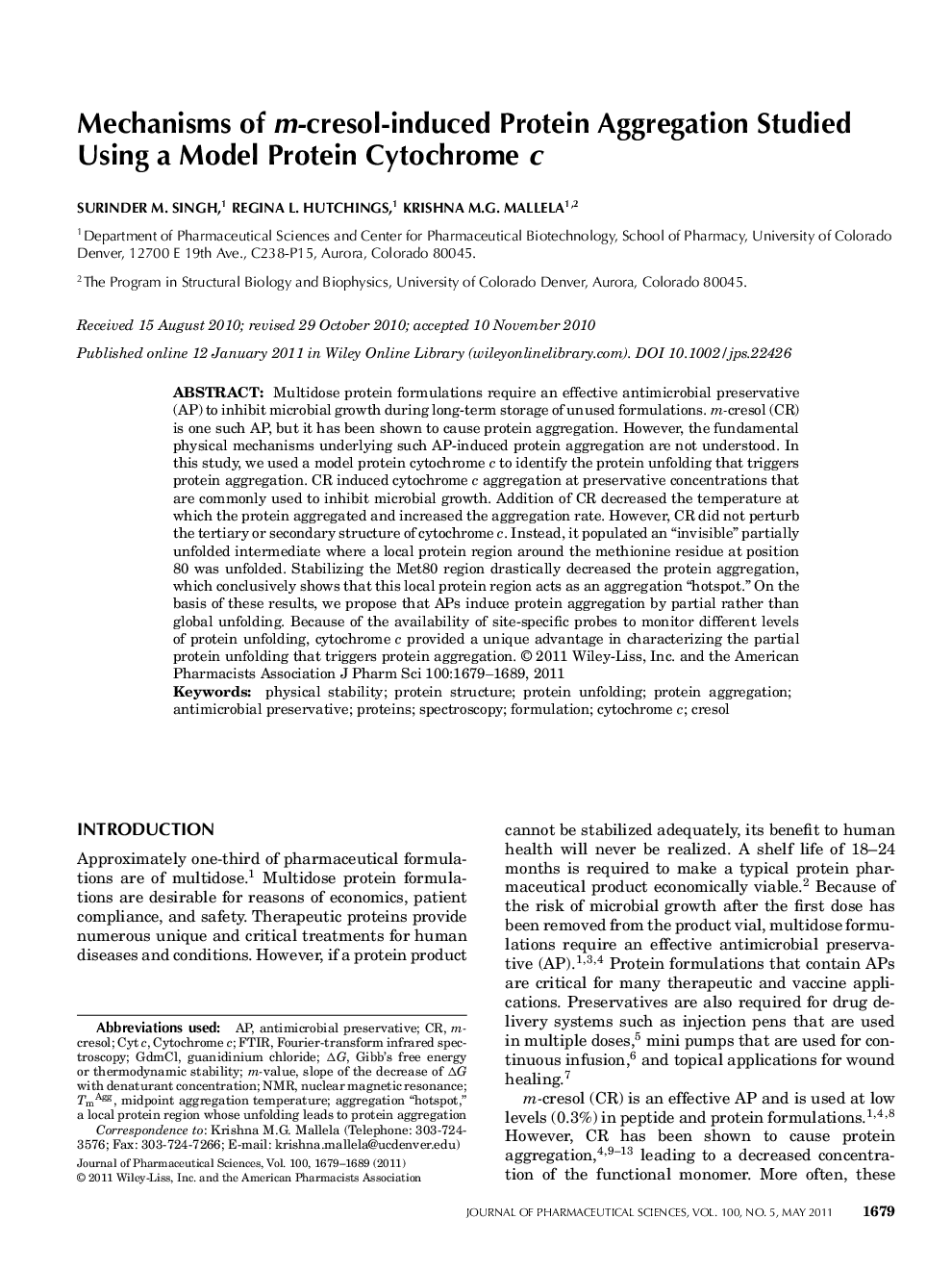| Article ID | Journal | Published Year | Pages | File Type |
|---|---|---|---|---|
| 2485601 | Journal of Pharmaceutical Sciences | 2011 | 11 Pages |
Abstract
Multidose protein formulations require an effective antimicrobial preservative (AP) to inhibit microbial growth during long-term storage of unused formulations. m-cresol (CR) is one such AP, but it has been shown to cause protein aggregation. However, the fundamental physical mechanisms underlying such AP-induced protein aggregation are not understood. In this study, we used a model protein cytochrome c to identify the protein unfolding that triggers protein aggregation. CR induced cytochrome c aggregation at preservative concentrations that are commonly used to inhibit microbial growth. Addition of CR decreased the temperature at which the protein aggregated and increased the aggregation rate. However, CR did not perturb the tertiary or secondary structure of cytochrome c. Instead, it populated an “invisible” partially unfolded intermediate where a local protein region around the methionine residue at position 80 was unfolded. Stabilizing the Met80 region drastically decreased the protein aggregation, which conclusively shows that this local protein region acts as an aggregation “hotspot.” On the basis of these results, we propose that APs induce protein aggregation by partial rather than global unfolding. Because of the availability of site-specific probes to monitor different levels of protein unfolding, cytochrome c provided a unique advantage in characterizing the partial protein unfolding that triggers protein aggregation.
Keywords
Related Topics
Health Sciences
Pharmacology, Toxicology and Pharmaceutical Science
Drug Discovery
Authors
Surinder M. Singh, Regina L. Hutchings, Krishna M.G. Mallela,
